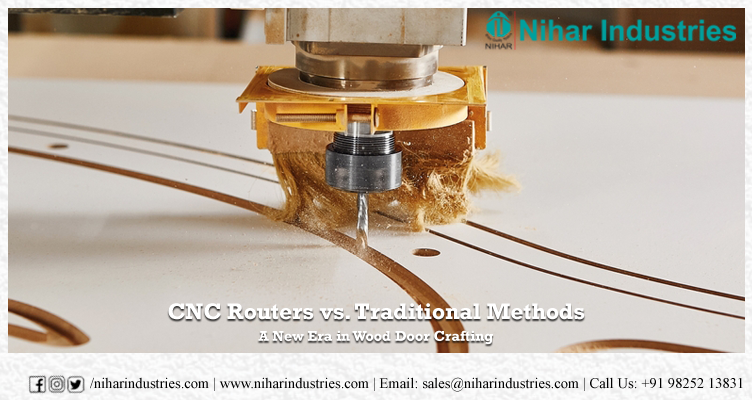With generations passing down age-old techniques, it can be said that woodworking has come a long way. Crafting wooden furniture like windows, and doors has a long history, particularly for the exquisiteness of wood and its longevity. The appeal of wood is unmatched till date. Every wood made item is an art in itself.
Since time memorial, wood has made its place in the residences of royals and high-end societies. Even modern homeowners today understand the efficiency of wood and look for wooden made objects that would adorn their domicile. Some of the most exquisite and high-quality woodwork found in households and buildings has been created using techniques, which frequently require a combination of hand tools and a great deal of physical labour. However, the introduction of Computer Numerical Control (CNC) routers has been a real gamechanger.
Use of new technology ushered in a new era in wood door making, providing benefits of all kinds starting from accuracy, effectiveness, and adaptability that are difficult for old techniques to match.
Traditional Techniques: A Handbook of Creativity
Traditional wood door-making techniques have a strong foundation in beauty and workmanship. To shape and finish wood doors, skilled artisans utilize hand tools, including chisels, saws, planes, and sanders. Each piece is unique because these techniques enable greater customization and detail work. Frequently, the procedure entails:
- Hand Carving – Craftsmen make intricate patterns and designs in the wood in an elaborate manner. This sort of process is arduous and often takes days to complete, depending on the complexity of the carvings.
- Joinery—Traditional joinery approaches, such as mortise and dovetail or tenon joints, confirm that wood pieces are connected strongly.
- Finishing: Sanding, staining, and varnishing are done by hand, allowing for a measured and uniform application
CNC Routers: Precision and Efficiency
With wood door manufacturing, significant technological advancements have come to the fore, such as CNC routers are gaining increased popularity. The CNC machine, controlled by a computer, can cut, carve, and shape wood with accuracy and speed.
The CNC process includes
- Design: Designers use CAD (Computer-Aided Design) software to generate sophisticated digital models of the door, complete with intricate patterns and designs.
- Programming: The digital design is converted by the CAM-aided software into a set of instructions for CNC machine use.
- Machining: The wood is cut and fashioned by the CNC router according to pre-programmed instructions, producing accurate and reliable results.
CNC routers have a lot of benefits
- Precision: CNC routers can create intricate and thorough designs with accuracy that is hard to do by hand.
- Efficiency: Production time and labour costs are lessened by mechanizing the cutting and shaping process.
- Consistency: Large-scale production can be made uniformly using CNC machines to create several identical doors.
A New Chapter in Wood Door Crafts
The requirements and project objectives ultimately determine whether to use CNC routers or more conventional techniques when manufacturing wood doors. Traditional methods are still the best for creating unique, handmade doors that exhibit skilled craftsmanship. Nonetheless, CNC routers provide several benefits for larger-scale manufacturing where accuracy, effectiveness, and consistency are crucial.

